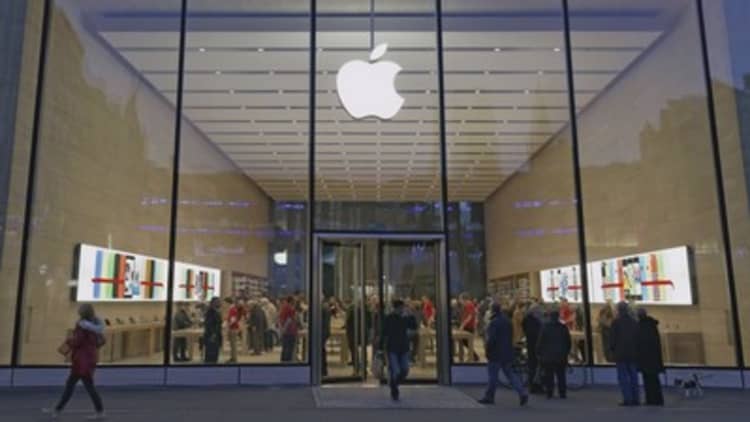
Apple reported earnings for its fiscal fourth quarter Thursday that beat Wall Street estimates on both the top and bottom lines. It also locked in a strategy of boosting prices to offset slowing sales — posting an eye-popping average selling price for the iPhone during the key September quarter.
But shares of Apple fell more than 7 percent — falling below its historic $1 trillion market cap — following the release, after the company missed shipment estimates on iPhones, offered light guidance and announced major changes to its reporting structure. By 4:00 a.m. ET on Friday morning, Apple shares had erased some of those losses but were still down 5.5 percent in premarket trade.
The company is projecting total revenue for the first quarter in the range of $89 billion to $93 billion, extending just slightly below analyst estimates of $93.02 billion.
Here's how Apple did compared with what Wall Street predicted for the fourth quarter:
- Earnings: $2.91 per share vs. $2.78, forecast by Refinitiv consensus estimates
- Revenue: $62.9 billion vs. $61.57 billion, forecast by Refinitiv consensus estimates
- iPhone sales: 46.89 million vs. 47.5 million, forecast by FactSet and StreetAccount estimates
- iPhone average selling price (ASP): $793 vs. $750.78, forecast by FactSet and StreetAccount estimates
Apple posted iPhone unit sales that were practically flat year-over-year, extending the trend of only modest growth it's seen in recent quarters. To compensate, Apple has increased the price of the iPhone, boosting its ASP and overall profit.
The company reported an ASP of $793 — a year-over-year increase of 28 percent — and well above analyst projections of $750.78, based on FactSet and StreetAccount estimates.
An ASP that high could indicate strong initial sales for Apple's highest-priced smartphone models: the iPhone XS, starting at $999, and iPhone XS Max, starting at $1,099. Both went on sale about a week before the end of the September quarter. It also indicates users are settling into higher device prices.
It's the last quarter that Apple will report such detailed iPhone figures, though.

Apple said on its earnings call that starting next quarter, the company will no longer break out individual sales numbers for the iPhone, iPad and Mac. The three main product lines will be wrapped into one reported revenue figure.
"When you look at our financial performance in recent years, take the last three years for example, the number of units sold during any quarter has not been necessarily representative of the underlying strength of our business," CFO Luca Maestri said on the call. "If you look at our net income during the last three years, if you look at our stock price in the last three years, there's no correlation to the units sold in any given period."
Outside the iPhone
Apple's effort to grow revenue outside the iPhone got a boost in the September quarter.
The company reported Services revenue of $9.98 billion. That's an increase of 27 percent, accounting for a one-time adjustment in the year-ago period, but slightly below Wall Street estimates of $10.2 billion, according to FactSet and StreetAccount estimates. The catch-all category includes revenue segments like App Store sales, Apple Music subscriptions and iCloud storage.
Services revenue also includes the company's digital payments tool, Apple Pay, which surpassed PayPal mobile in transactions during the quarter, Apple said.
"When we look at our services business, we think about the fact that we have a very large and growing installed base," CEO Tim Cook said on the company's earnings call. "The installed base of all our major product categories is at an all-time high and has been growing over the last several quarters, so the opportunity for us to monetize our services business continues to grow over time."
Apple's Other Product revenue, which includes sales from gadgets like HomePods, AirPods and Apple Watches, rang in at $4.23 billion, an increase of 31 percent year-over-year. Apple doesn't break out specific revenue figures for wearable devices, but said the category grew 50 percent year-over-year.

Here's how Apple did in other key product segments:
- iPad: 9.7 million units and $4.09 billion in revenue
- Mac: 5.3 million units and $7.41 billion in revenue
The company reported double-digit, year-over-year revenue growth in all geographic regions, led by a 34-percent revenue upside in Japan and a 22-percent revenue upside in the rest of Asia Pacific.
Finally on Thursday, Apple announced a dividend of 73 cents per share, payable on Nov. 15.



